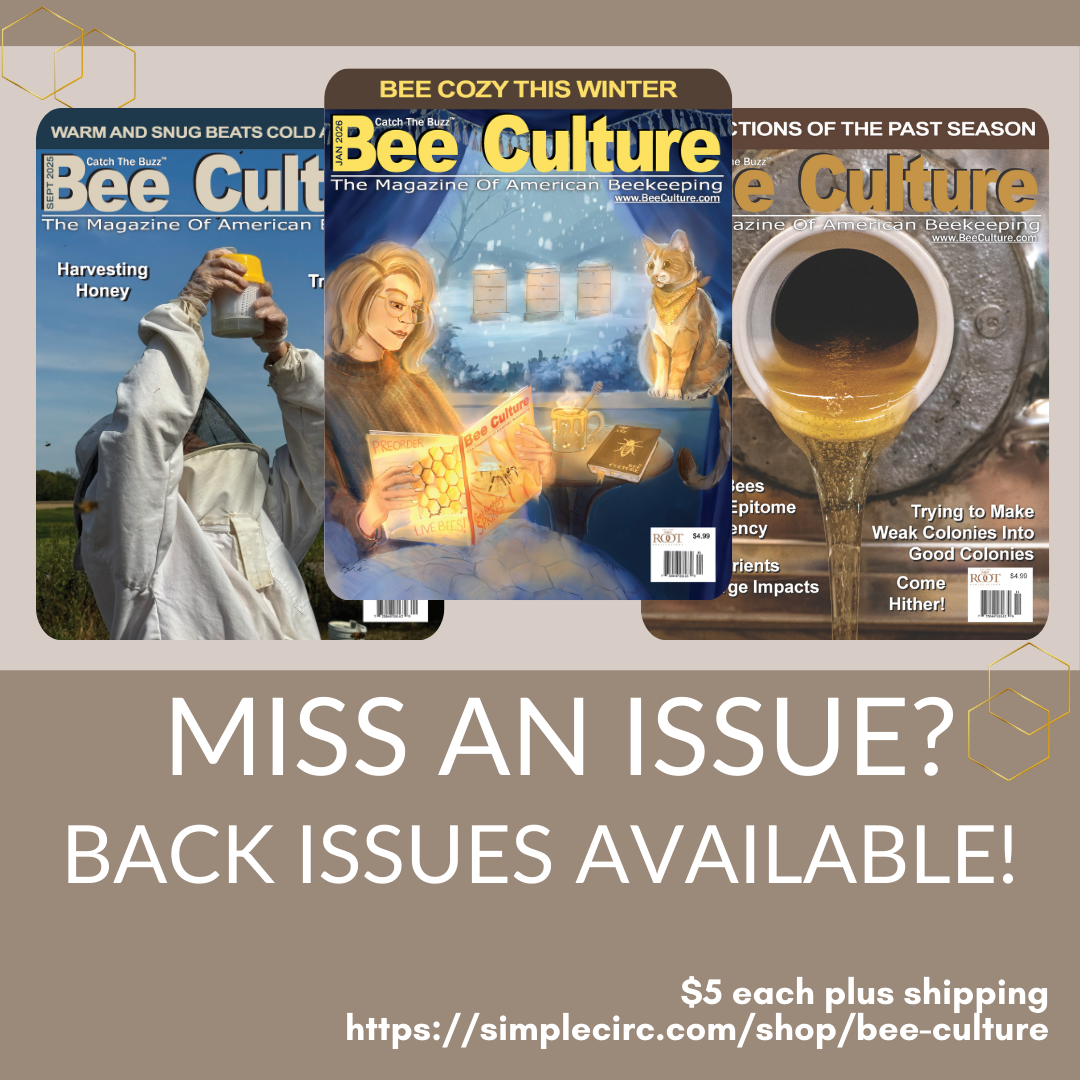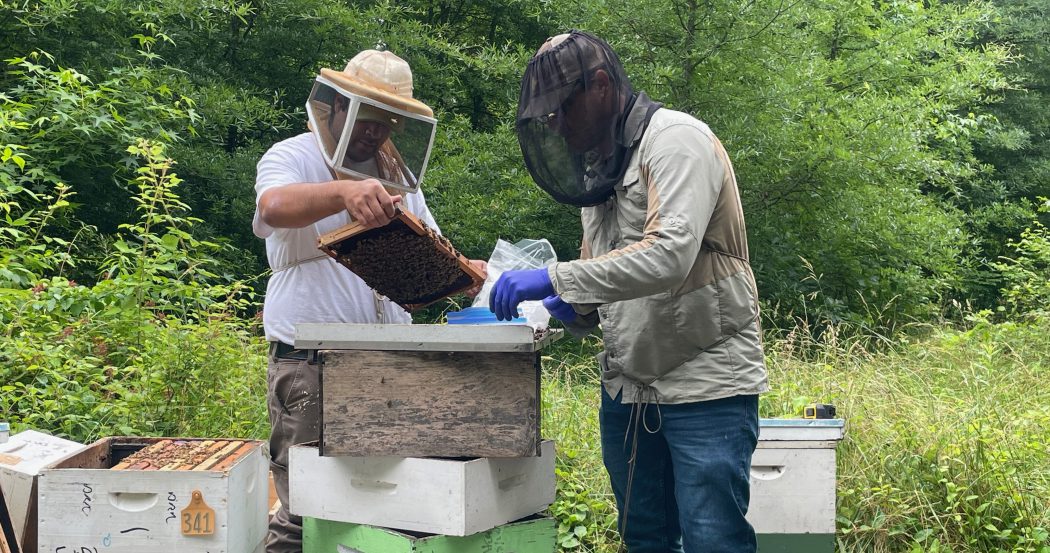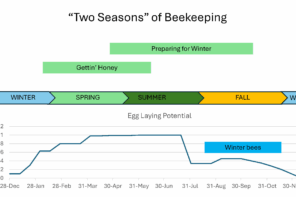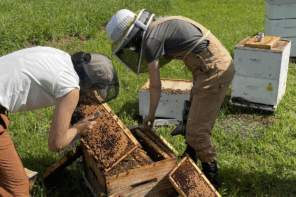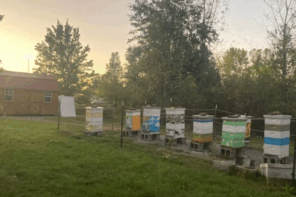Click Here if you listened. We’d love to know what you think. There is even a spot for feedback!
Read along below!
Found in Translation
Nature, Nurture and Varroa Resistance
By: Jay Evans, USDA Beltsville Bee Lab
Western honey bees were hygienic long before the scourge of Varroa mites, or really any known mite pressures. It is literally in the DNA of worker bees to pull brood or adult nestmates out of the colony in response to disease or morbidity. In the 1990’s, Marla Spivak led the charge to contrast older efforts studying the genetics behind brood hygiene with similar results observed when bees began to face Varroa. Specifically, she and Gary Reuter showed that bees that scored high for hygienically removing diseased brood also tended to keep mite levels low (Spivak, M.; Reuter, G., S. Performance of hygienic honey bee colonies in a commercial apiary. Apidologie (1998), 29, 291-302). Thus, a bridge was made between worker bee behaviors that were directed toward very different targets and were presumably triggered by very different cues. Over the ensuing decades, Varroa has emerged as the larger threat to honey bees, so it is helpful that bees came to the game with at least some ability to recognize and remove that threat.
Studying what makes a bee hygienic remains a hot topic today. One interesting line of work centers on how much of the hygienic impulse is driven by genetic predilection versus how much is purely responsive to changing hive cues and hive status. Overall (spoiler alert), the genes seem to have a substantial say in this, but colony environments also affect workers’ abilities to improve their hygiene. There is even evidence that colony size could have a say in how much relative effort bees devote to hygiene. Phoebe Snyder and colleagues measured the response rates of bees to pin- or freeze-killed bees as well as a chemical trigger of hygiene, in group sizes ranging from a single bee to full-sized colonies (Snyder, P.; Martin, J.; Herman, J.J.; Franklin, S.; Wagoner, K.M.; Soroker, V.; Rueppell, O. The impact of honey bee (Apis mellifera) group size on hygienic behavior performance. Behavioral Ecology and Sociobiology (2024), 78, 52, https://doi.org/10.1007/s00265-024-03471-6). The most pronounced results compared clusters of bees unlikely to occur in nature but, as predicted by the authors, bees did tend to increase their investment in hygiene as group size increased…up to colony contrasts between 1500 and 3000 bees. Single bees did not have any inclination to remove their dead nestmates from the scene.
Stephen Martin and colleagues further explored the balance of hive environment and histories with genetic tendencies for hygiene. They compared honey bee stock in Hawaii and in the United Kingdom that had never been exposed to Varroa with stock that had acquired some degree of resistance (Martin, S.J.; Grindrod, I.; Webb, G.; Toft, R.; Villalobos, E. Resistance to Varroa destructor is a trait mainly transmitted by the queen and not via worker learning. Apidologie (2024), 55, 40). So as to not accidentally introduce the byproducts of mite infestation into naïve populations, queens from naïve populations (Kauai Island in Hawaii and Colonsay Island in the UK) were brought alone or with their colonies into mite-containing apiaries. In Hawaii, mite numbers increased by threefold from January to May in colonies headed by these naïve queens, while in the UK colonies with naïve queens had four-fold higher standing mite levels after one year. As expected, resistant stock uncapped brood at a higher rate and had greater accuracy in targeting mite-infected brood cells while ignoring non-parasitized neighbors. This is a testament to the value of pushing genetic stock to show better resistance traits and shows that such resistance is likely to evolve independently whenever mite pressures are in play. It also gives more confidence to the observation that measuring brood uncapping/recapping as a resistance trait is a good predictor of future mite levels.
Given the evidence that bees differ in significant ways, what is the best way to check to see if your own bees are resistant? Derek Micholson and Robert Currie tackled this question recently (Micholson, D.; Currie, R.W. Heightened sensitivity in high-grooming honey bees (Hymenoptera: Apidae). Journal of Insect Science (2024), 24, doi:10.1093/jisesa/ieae057). They screened bee lineages from both Canada and New Zealand and tested for the abilities of worker bees to react to a range of stimuli. Worker bees from these source colonies were divided up into queenright units of about 8,000 bees and those units were screened for hygienic behaviors before brood was available for mites. Mite drop was significantly correlated with mite damage, suggesting that bees were actively attacking the mites on their own bodies or the bodies of nestmates. Tests for hygienic behavior specifically, driven by exposure to mites, chalk dust, or even the touch of a bee by a brush-wielding human, were used to get at what made a bee start hygienic behavior. As expected, individual workers derived from colonies with heavy mite drops, and especially those with a higher fraction of damaged mites, tended to be more reactive to grooming stimuli. Chalk dust seemed to really get the goat of bees, especially when applied to the thorax, triggering grooming even more often than the placement of a mite. It also seemed like a good proxy for overall mite drop at the colony level.
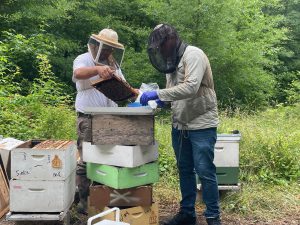
If there is a genetic basis to these behaviors, identifying the precise gene or genes involved in passing down that trait would be a very good thing. Nearly 20 years after the publishing of the honey bee genome, the search for key genes tied to resistance continues. Numerous studies have connected specific genes or gene regions with hygienic behavior. One study that seems on the cusp of mapping how specific genes relate to Varroa-driven hygiene was published last year by Nuria Morfin and colleagues (Morfin, N.; Harpur, B.A.; De la Mora, A.; Guzman-Novoa, E. Breeding honey bees (Apis mellifera L.) for low and high Varroa destructor population growth: Gene expression of bees performing grooming behavior. Frontiers in Insect Science (2023), 3, 951447; https://doi.org/10.3389/finsc.2023.951447). They first screened a large population (300 colonies) of bees for those with low and high Varroa growth patterns. Bees from colonies in each class were then covered with an irritant (in this case wheat flour) and scored for their tendency to self-groom. Bees from the high-Varroa lines took their time reacting to the irritant, taking twice as long to show light grooming when compared to bees from the low-Varroa lines. Many bees were then sacrificed, and the scientists began an intense look at gene activity in the brains of those bees. Groomers had significantly different activity in genes that express proteins involved with the sense of smell, again suggesting that awareness is a large part of the battle, and pointing to traits that could be better bred into populations.
All of these studies offer hope that, despite the clear and present danger of Varroa and the relentless pool of mite-associated viruses, our bees are fighting on their own side to reduce parasites. Choose your queens and drones wisely and it should take some heat of one of the largest causes of colony losses.

